The Kangal dog is a large and powerful ancient livestock guardian originally from the Sivas region in Turkey.
This dog has been selectively bred over hundreds of years primarily as a Turkish shepherd, a guardian dog based on their size, strength, temperament and appearance.
They are also known as a Kangal Çöban Köpeği or Kangal Shepherd Dog
This guardian is a large and formidable working dog.
They are especially suited to working in pairs or team(s) to protect livestock from large predators (e.g. Foxes, Wolves and Bears). Because of this, they have a predictable and reliable temperament of being gentle with livestock and children and aggressive to predators.
They were historically bred by Turkish Shepherds, however, in the late 20th century the Kangal become popular in the US for their ability to guard sheep, goats and cattle.
Kangal Dog is best suited to an active working role in livestock guardianship on farms or freeholdings.
To learn more about kangals, their temperament, behavior, breed standard and to understand if this is the right breed for you, read on.
Kangal Dog Quick Summary and Facts
| Purpose | Working (Specializing in guardianship) / Sheep, Goat and Cattle Guardian |
| Size | 30 to 32” (male) or 28 to 30” (female) |
| Weight | 110 to 145 pounds (male) or 90 to 120 pounds (female) |
| Lifespan | 12 to 15 years |
| Color | Tan with black muzzle and ears |
| Temperament | Peaceful towards known humans, children and family pets. Territorial towards all else. |
| Daily Exercise | Self exercise only – 45 minutes to an hour |
| Activity Level | Medium |
| Daily Food Consumption | Between 2,600 and 3,500 calories |
| Known Health Issues | Hip Dysplasia |
TABLE OF CONTENTS
- Kangal Dog Quick Summary and Facts
- Kangal Dogs Breed Overview
- Kangal Dogs History and Origin
- Breed Personality, Temperament and Behavior
- How to Care for Kangal Dogs
- Kangal Dogs Appearance: Coat, Color and Grooming
- Known Health Issues of Kangal Dogs
- Did You Know? Five Interesting Kangal Facts
- Kangal Dogs Summary
Kangal Dogs Breed Overview
Turkish kangal is a working guard dog and shepherd dog recognized by the United Kennel Club and the Cynology Federation of Turkey as an official breed.
This Kurdish dog is the national dog of Turkey. There are two government breeding centers in Sivas; the city where the dog originates from.
Turkey is not the only country with this magnificent dog.
They gained popularity in the US exactly for the task of sheep, goat and cattle guardianship on large farms.
In the US a Kangal puppy will cost upwards of $1,000.
Typically, puppies are sold into the US Farming and Agriculture Industry; which also imports the dog from Europe.
Kangal Dogs History and Origin
The Turkish Shepherd Dog originates from the East Anatolian Plateau of Turkey at the beginning of the 12th century.
It is thought the Kangal is related to early mastiffs, they have been categorized into the molosser family alongside the American Mastiff and Bullmastiff.
The purpose of Kangal Shepherd is to protect flocks of sheep and in more recent times herds of cattle.
He is adaptable to guarding different livestock (i.e. birds), however, they must be trained and managed.
They first came to the UK in 1965 and the US in 1985 and around six to ten dogs are imported each year to the US.
Breed Personality, Temperament and Behavior
Turkish Shepherds ensured their dogs did not display aggression towards humans or sheep (i.e. stock or cattle). This behavior would not be accepted, as the shepherds couldn’t afford to lose sheep, consequently isn’t present in the breed.A Kangal dog is recognized for its predictable and reliable temperament.
For this reason, despite their size, they are very gentle dogs, calm and peaceful with children and family pets whilst being protective of sheep and cattle.
If your dog doesn’t have a herd or flock to guard, don’t be surprised to find them guarding family pets or your children.
They will display independence, typically around two years old, which is the age they typically start guardianship.
She will be bold and fearlessly loyal to their owner being very trustworthy with known humans or animals.
She is always alert and territorial with their family, flock or herd and will find ways to protect them.
Because of their origins, Turkish kangal dogs need a job to prevent boredom and unwanted behaviors. Because they are working dogs, kangal dogs are not typically recommended for new dog owners or small family homes.
If considering kangal dogs for a residential or city environment consider these two important factors:
- You will need a safe, closed area to train your dog, specifically 6-foot fences with deep foundations; to prevent digging and jumping.
- Like other shepherd dogs, they bark an awful lot.
Guardianship and Behavior to Predators
A Kangal dog has incredible instinct and the ability to sense a predator.
Typically, two or three dogs are able to protect a flock of anywhere from 150 to 250 sheep. The best combination is two neuter males and a single female.
This enables active patrolling and guardianship.
If a Turkish Kangal hears or senses predators, he has a three-phase approach to protecting his herd:
- Their primary defense is to intimidate a predator and bark
- If the predator is not deterred and continues to approach he will roar
- If the predator is still not deterred he will attack
He has speed, power and agility reaching a speed of over 30 miles per hour (50 kilometers per hour) and a bite force of over 700 psi; three times that of a Pitbull.
Placing themselves between the flock and predator he will attack by throwing their shoulder to knock down a predator before attacking hind legs and throats.
A Turkish Kangal can successfully guard against raccoons, coyotes, hawks, foxes, wolves and bears.
How to Care for Kangal Dogs
They have wonderful and intelligent personalities in a working scenario.
She is most definitely a working guard dog.
A Kangal dog will reach maturity after two years.
A puppy will mature slowly, compared to other guard dogs, and can be very cumbersome; they are notoriously powerful chewers and diggers; they especially like digging under fences!
These dogs grow up slowly, even compared to other shehperd dogs. They can be goofy and adorable as puppies but they are also famous as powerful chewers and diggers.
Food and Diet Requirements
Historically these Sivas Kangals would eat scraps from villages; including water, goat’s milk, yoghurt and bred.
This was known colloquially as yal.
This guardians historical diet probably isn’t nutritionally complete, as it lacks protein in high amounts, so you should look towards a high-quality kibble; feel free to add raw meat occasionally.
However, this breed does eat less than you would imagine for such a giant breed.
Remember
In the US there is not a legal requirement for quality control on dog food or to meet AAFCO nutritional guidelines or packaging.
For simplicity and ease of care the majority of these dogs are fed with a high quality kibble; especially formulated for large-breed and active dogs.
However, some ranches opt to feed a raw diet.
The dog will thrive on both diet types, however, in cities or suburban areas it’s best to avoid a raw diet with this dog due to the logistical requirements of preparing, buying and freezing the feed.
Given the fact a fully grown purebred can stand an impressive 32 inches tall and weighs 145 pounds; they require:
| Male | 3,900 to 4,800 calories | 2,600 to 3,500 calories |
| Female | 3,000 to 4,100 calories | 2,100 to 2,800 calories |
Make sure these calories are balanced between protein, fats and carbohydrates.A fully grown male will typically consume 7 cups (2 quarts) of dry kibble to reach their calorie intake.
A dog typically requires 30 calories per 1lb of body weight.
This is heavily influenced by how active the dog is and their age.
Remember
Overfeeding a puppy will not increase their natural size and will result in obesity.
With larger breeds, it is far better to give your puppy enough food for a ten-minute serving. If your puppy has left over food after ten minutes then calculate the leftover and reduce their next serving accordingly.
During their juvenile phase they require something to chew; leather straps or toys are a great substitute to a bone.
Exercise and Activity Requirements
Being active shepherd dogs; they certainly require the opportunity to exercise and are active dogs.
These dogs are not overly active (e.g. Huskey), however, they are best suited to large working farms with outdoor space.
He requires a private and calm place to exercise, ideally fields of more than five acres where they can roam.
Whilst patrolling a property he naturally finds higher ground to act as a viewing point.
Whilst out in public, your dog should not be trusted off-leash. He should only ever be off-leash in privately owned properties with secure perimeters.
Your dog will rarely require deliberate exercise, self-exercise through guardianship is all that he will require.
In addition to physical exercise, he is a very intelligent dog who requires mental stimulation.
Obedience and agility training should be avoided. It is practically impossible for any shepherd dogs to undergo basic dog obedience, the same applies to kangal dogs.
Allowing your Kangal Shepherd plenty of time to patrol, roam and run will help them to develop into a loyal and trusted dog.
Training Requirements
Before you attempt to train a Shepherds Dog, you must acknowledge their different characteristics from other breeds.
This Kangal Dog has been bred for hundreds of years as a guardian and has incredible devotion to their flock.
Owning a shepherd dog is not like owning a typical pet.
They are incredibly intelligent and independent thinkers.
Their ability to aggressively defend their herd is innate to them and they require no training for this task.
Your training role with a Kangal will mostly be supervision, as conventional dog training is almost impossible with this breed.
You will need a safe, closed area to training your dog, specifically 6-foot fences with deep foundations; to prevent digging and jumping.
This guardian can typically be trained to complete one of two roles:
- Guardianship Shepard (i.e. cattle or flock protection) – the most natural role
- Field Protection (i.e. livestock) – a role of active patrol
Some sources online, quote tis dog as being a superb dog for personal protection – this is completely unadvisable.
Kurdish Dog Socializing Requirements
Companionship is given to a Kangal from a very young age by their pack, mother and master.
Most importantly, this dogs requires active and young socialization; especially if they are being used in protection to become exposed to other sounds, smells and animals.
Exposing your dog to their property at an early age helps to prepare them for their active role.
Grooming requirements
She requires minimal grooming with their short dense double coat.
She sheds their coat twice a year with spring and winter.
During the start of each season, she will require heavy brushing using a metal comb and deshedding tool.
The tool quickly removes loose hair from their undercoat which can be trapped by their overcoat.
After the bi-annual coat shed she will require grooming for 30 minutes each month this should consist of:
- Brushing their coat for five minutes each week
- Nails clipped once per month
His dense coat will shed consistently throughout the year so is not a hyperallergic dog.
Unlike smaller breeds, this dog does not require their teeth brushing, dental hygiene can be maintained by their diet and bi-annual visits to the veterinarians.
Kangal Dogs Appearance: Coat, Color and Grooming
They are a very pure breed with little cross-breeding in their history; due to Sivas being so remote from other cities in Turkey.
This isolation developed an easy-to-identify breed standard due to its lack of cross breeding; non-standard colors (e.g. brindle or white on the body) or coats (e.g. fluffy) are indicators that the dog is not a purebred.
This purebred dog is a powerful dog which should be between 30 to 32 inches to the withers (i.e. top of shoulder blades) and weigh between 110 to 145 pounds.
A Turkish dog will be slightly longer than they are tall with a curled tail to complete the famous silhouette.
Kangal Color
The Sivas dog’s color is a famous characteristic of the breed; it should ALWAYS be a solid tan (i.e. light golden, fawn sable, or dun).
It is said Turkish Shepherds wanted their dogs to be tan so they are easier to see at night and differentiate from predators.
His face should have a black mask covering their muzzle in its entirety with soft glossy black ears.
Variation in Color
The black muzzle sometimes continues over the top of their head; this is acceptable in the breed standard
They must always be tan in color with a black muzzle and ears; no exceptions.
Occasionally they will have white markings on their toes or chest; this should be a solid coloration and not spotted.
Some crossbreeds have brindle or white colorings; brindle is a sure sign of crossbreeding and white is only allowed below the knees of the dog (i.e. feet only).
Coat
The coat of a Kangal is a double coat.
This should be a short and quite dense double coat.
The topcoat should be tan (as discussed above) and will be harsh to the touch, whilst the undercoat should be gray and soft.
The length of coat is between 3cm and 7cm depending upon the season.
Her coat will change with the season, during the winter the coat will become thicker making the coat very dense.
In the Spring the thicker coat will be shed as her coat returns to a normal state.
The coat is straight, it should never be long, wavy, wiry or fluffy. She does not have dewlap (i.e. skin rolls).
Head The skull is rounded on all sides with light furrowing in the forehead (without dewlaps). The head should be large and the head width should be 55% of the head length.
Neck The neck should appear muscular with the skin attached tightly to the neck base with none or very minimal dewlap.
Body The body should be between 10-12% longer than the height of its withers, a typical male body should be 33” to 36” in length.
Tail The tail is level with the coup line starting with a thick base and tapers to a curl at the tip.
Feet Large rounded or oval feet with larger front feet and either a solid tan or white.
Coat A short straight dense double coat 3cm in the summer and 7cm in the winter.
Color Solid tan color on the dog with a full black muzzle mask and black ears.
Known Health Issues of Kangal Dogs
These Turkish Shepherds dogs are renowned for their incredible health.
The only reason they are not entirely free from known health conditions is because of hip dysplasia; due to their size.
Canine Hip Dysplasia is a heritable condition in these dogs which causes large amounts of pain and arthritis in the dog’s hip joints. This occurs in 50% of large breeds and surgery to improve the condition can cost in excess of $6,000.
Hip dysplasia is the only genetic disease known to affect the dog.
Like with most giant breeds, medical care is required in far larger quantities (e.g. heartworm preventatives) and consequently costs more.
The estimated cost of medical bills for the first year is $1,200.
This breed is a very health breed, and providing you buy from a good breeder – which has bred the dogs responsibly, then they shouldn’t have many health conditions to be concerned of.
If you are seriously considering this dog you should familiarize yourself with the Kangal Dog Club of America who have an ethical breeding standard with 12 key principles:
- Understand the needs and demands
- Not to breed disqualified dogs
- Not to breed poor temperament dogs
- Not to cross breed the dog
- Certify hip status (using a scan)
- Preserve working temperament
- Maintain and submit pedigree records
- Hip certification reports
- DNA certified
- Register all puppies with UKC
- Contractual legally binding sales
- Support new owners
There are four known and recognized breeders in the US.
Did You Know? Five Interesting Kangal Facts
- The breed dates back to the 12th century, where Turkish Shepherds would use the dog to guard their sheep from predators including wolves and bears.
- A fully grown male can be over 140 lbs.
- The Kangal Shepherd has the strongest bite force in the canine world being able to generate a force of over 700 pounds per square inch; compared to a Rottweiler of 328 pounds per square inch, or a human with a biteforce of 150.
- This dog is not a Anatolian Shepherd, they are separate breeds descending from an ancient legacy.
- Two or three are perfectly able to protect a flock of sheep between 150 and 250.
Kangal Dogs Summary
A successful owner must be loving whilst providing the dog with an active role and firm leadership.
Consistent applied training and socializing will allow this magnificent guardian to become well trained in flock managed, security or companionship.
This breed has lots to offer; loyalty, fearlessness and guardianship.
Have you owned a Kangal and what role did they have? Feel free to share your experiences or ask questions below.
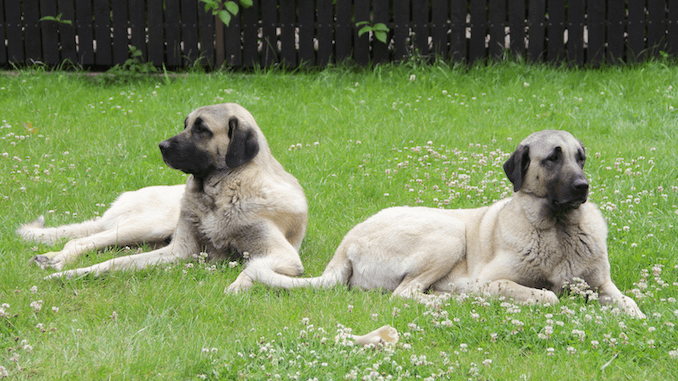
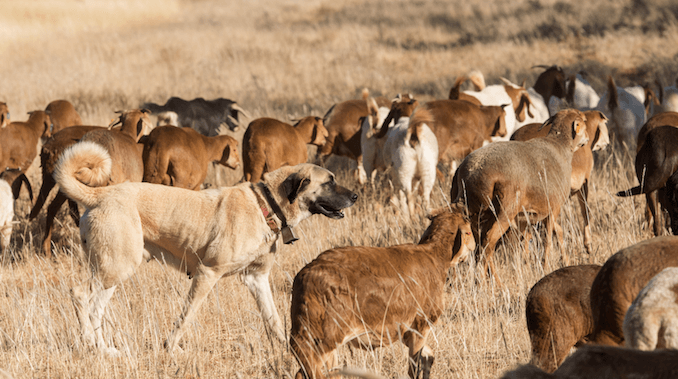
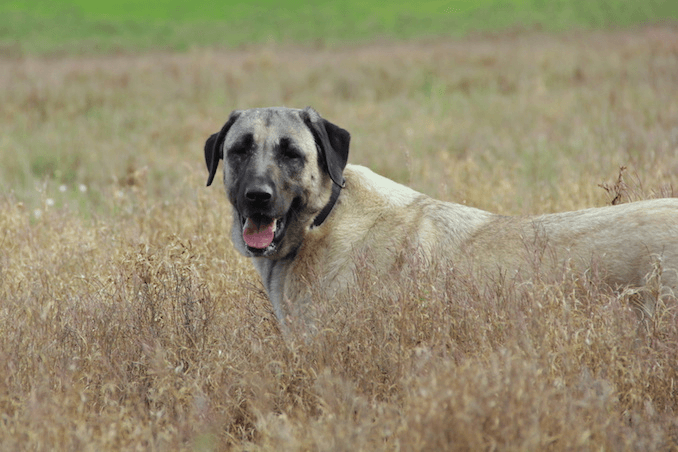
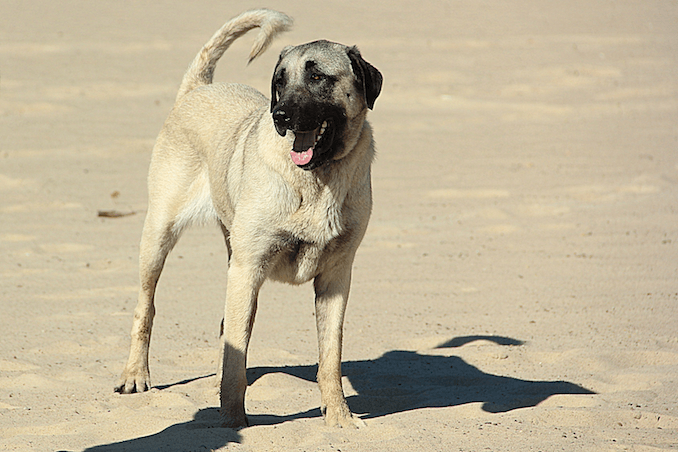
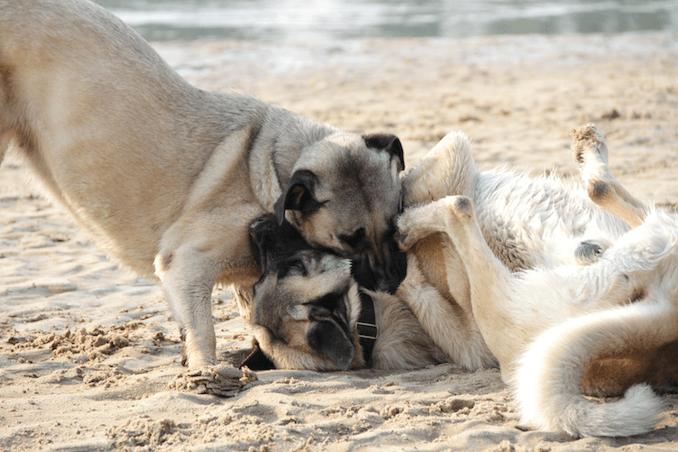
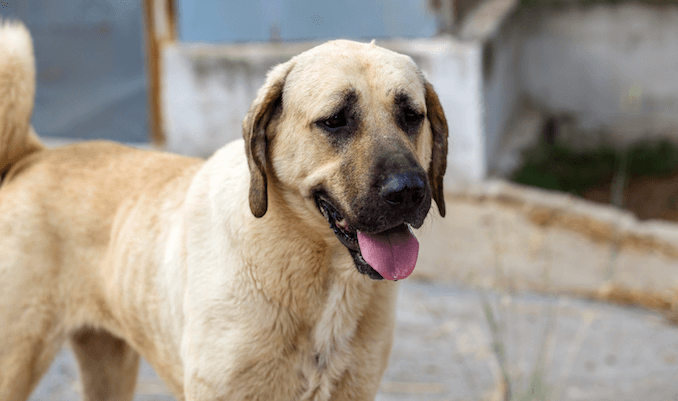

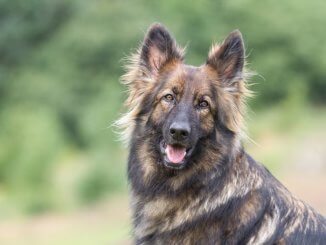

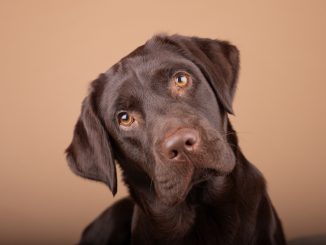
The only “role” my little girl (117 lb.) has played is to be my bundle of pure love, dedication and protection. She is a 100% pure Kangal, with a registered sire (imported from Turkey) and a dame that traces her lineage back 5 generations.
If I had previously known about this breed before, I would have had owned a Kangal long before; fantastic companions and family members!!!
When I lived in Tabriz, Iran we had a Kangal as one of our guard dogs (the other two were Caucasian Sheepdogs). Aslan, our Kangal was intelligent, loyal, and fiercely protective. I would definitely consider welcoming another into my life as a guardian for my farm.
I have 10 acres. This dog came to us as a stray pup. Took a little coaxing for him to trust us, but once he did he was totally ours. Gentle & kind – this breed is superb!!
We adopted our Kangal (maybe a Kangal-Kuchi mix) from someone who brought it to our farm. He is very loving and playful, but I am having trouble training him to stop play biting. He also has strong resource guarding instincts. I wanted to know if anybody else has experienced these traits and how they have gone about training them.
We rescued a two year old male in Montenegro recently. (Obviously no papers, but a pretty distinctive breed). He’s friendly, gentle, calm, very loving, non-aggressive to other animals on walks (unless aggressively approached by them), and LOVES meeting and greeting women. He slips out his harness if he can and runs at SPEED! So far, pretty trainable, but stubborn and independent. Smart, sweet and since we don’t have a fenced garden, stays inside with great house manners. He’s adorable.
Hi Yvonne. It’s great to know your Kangal has been trained so well. Do you have any tips to share? And, did your dog have resource guarding (especially with bones) instincts and play biting problems?
While stationed in Turkey I had a Kangal. She was one of the sweetest and smartest dogs I’ve known. I was heart broken when I wasn’t allowed to bring her back. Thankfully I found her a good home with one of my Turkish friends. She was three when I left so she had just started guarding the home. So for three years we played.
I have english mastiffs, and siberian huskies which resembles a wolf and I really want a kangal. Does anyone with this breed know if I can raise a kangal with them?
Yes Kangal!
Mine is mixed and is an excellent personal guardian and lover of children. She excels at staying very close to me and being incredibly alert of our environment, using her keen sight and hearing equally well she also is adept at reading me and discerning of I am in need of assistance, myself. This is such a multitalented guardian. I am so impressed. Her flaw may not be from her breed but rather some scary experiences as a pup. She is highly animal reactive.
Everyone from Sivas/Turkey take a bit of pride in the Sivas Kangal breed. I guess I am no exception. My uncles who had cattle farms used to have several of them at any tıme. Sivas Kangal is the only breed in Turkey which can put up a fight against wolves successfully when the wolves occasionally attack the farm animals. Sivas Kangals are super reliable for the protection of a farm or a house, but they are also great companion. Apart from their strength and large size, they are known to be super smart and very caring. I really look forward to having one when I retire.
BTW I am quite puzzled that you referred to Kangal as a “Kurdish dog” twice above. Is it a typo? I have never heard that Kangal dogs would be labeled as Kurdish dogs as a middle age Turkish man in my life regardless of having family roots in Sivas.
I have a female 2 and a half years now pregnant in Cyprus.She is superb guardian I think from 20months old. she is very friendly with children at walks but barking very much at home when a cat pass by etc.. what astonished me the most was one time I had budgies in her cage, and the one escaped. She caught it with her mouth carefully not to harm it and she put it inside her drinking water for the bird to get wet and not be able to fly until I come and take it and put it back in the cage. That astonished me how intelligent she is on herding. Also when we walk in the mountain and I need to climb somewhere she climbs 1st and waits for me to grab her and pull my self up
Our baby is a rescue. We were originally told that she was a Great Pyr mix. As she grew and developed it became apparent that she is 99% if not pure Kangal. She meets all the standards physically, mentally, behavior and in temperament. Her only trait that isn’t in the standard is a small amount of white around her muzzle in the black mask. We got her as a companion for my wife for when I was away. She is extremely protective of her and me and totally accepting of our family members. She immediately sensed that my father in law was older (85 when they met) and is so gentle around him as well as our grand children. I tell my wife that I feel more comfortable with our little Tia (125 lbs and about 32″ at the withers) at home with her when I go hunting. She guards the house at night and will patrol to make sure everything is as it should be. She is an amazing dog we love her and she is part of the family.